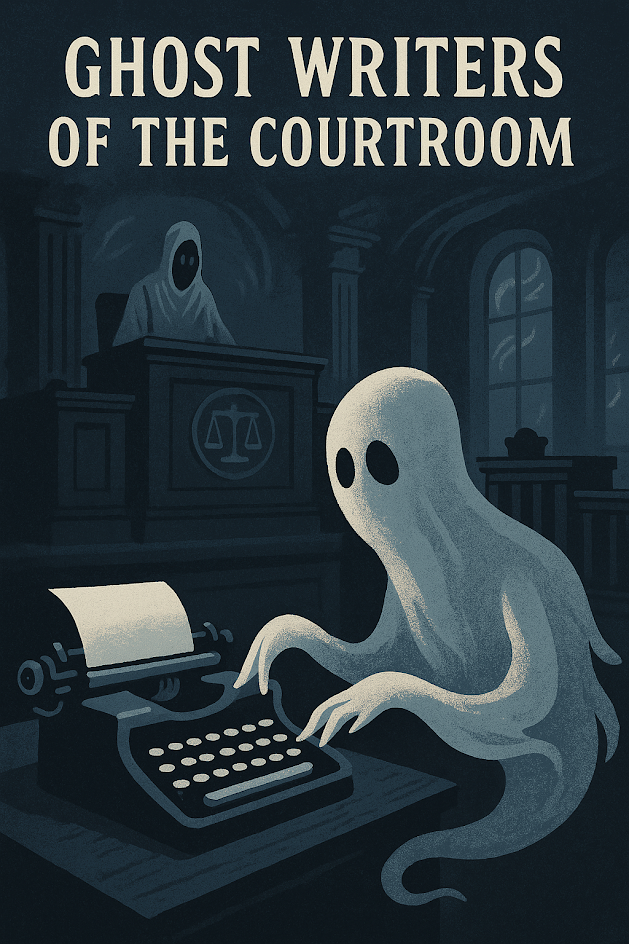By Stuart Kerr, Technology Correspondent
📅 Published: 9 July 2025 | 🔄 Last updated: 9 July 2025
✉️ Contact: [email protected] | 📣 Follow @LiveAIWire
🔗 Author Bio: https://www.liveaiwire.com/p/to-liveaiwire-where-artificial.html
The Rise of the Robotic Advocate
In a courtroom not far from here, a quiet revolution is taking shape. Legal briefs are being outlined by code. Arguments are being sharpened by algorithms. In some jurisdictions, even judges are starting to experiment with artificial intelligence to speed up decision writing.
The idea that a computer could help you draft your legal defence is no longer hypothetical. It's happening. And whether that prospect feels empowering or dystopian depends on where you sit—behind the bench, at the bar, or on the wrong side of a lawsuit.
AI is poised to reshape legal systems from the inside out, offering automation, consistency, and access—but also raising fundamental questions about fairness, accountability, and the role of the human advocate.
From Legal Aid to Legal Algorithms
The courtroom has long been an arena of tradition, precedent, and careful interpretation. But recent studies show that AI tools are increasingly improving access to justice—especially in areas where human resources are stretched thin.
A 2024 Reuters report highlighted a Berkeley Law field experiment showing that AI-assisted legal drafting significantly increased accuracy and speed for legal aid providers. For underfunded clinics and overwhelmed defence teams, these tools aren’t just convenient—they’re transformational.
At the heart of this shift are platforms like Clearbrief and Harvey, which generate summaries, predict arguments, and propose citations based on vast legal datasets. While they don't replace lawyers, they increasingly augment their workflows, allowing smaller firms and self-represented individuals to level the playing field.
Judges Join the Code
It’s not just defence attorneys benefiting from the digital shift. In March 2024, AP News reported that judges in England and Wales have been given cautious approval to use AI tools in drafting legal opinions. The judiciary remains wary of full automation, but acknowledges the efficiency gains for administrative tasks and summarising evidence-heavy cases.
This growing institutional acceptance mirrors moves in other countries, including Estonia and Singapore, where courts have piloted AI for small claims rulings and sentencing recommendations. Still, safeguards are critical. In the UK, judges are explicitly warned not to rely on AI for the "judgement itself"—only for drafting assistance.
Law Firms Go Predictive
In the private sector, law firms are racing to capitalise. According to a 2024 Financial Times feature, firms like DLA Piper and McDermott Will & Emery are using AI to predict legal outcomes, assess litigation risk, and draft contracts at scale.
These tools not only save time—they give firms a competitive edge. A contract that once took two associates a day can now be assembled in minutes, flagged for risk, and tailored with pre-trained legal language models.
But the same FT report warns of a growing divide between firms who adopt AI responsibly—with oversight and human review—and those who overdelegate, potentially opening themselves up to malpractice or bias claims.
Ethical Fault Lines
As AI becomes embedded in legal workflows, a deeper question emerges: Can a machine truly understand justice?
According to the BIICL’s 2023 legal AI report, many current tools are trained on precedent but lack contextual understanding. They can mimic argumentation, but not necessarily grasp the societal or moral implications of a ruling.
Worse, automation may reinforce the very inequities it seeks to fix. If the training data reflects past discrimination, so too will the AI. Without rigorous oversight, even the most advanced tool could replicate systemic bias—in sentencing, in custody disputes, or in asylum cases.
The Legal AI Use Case Radar Report 2024 echoes these concerns, urging institutions to embed ethical review boards, transparent audit trails, and fail-safes into every stage of AI-assisted legal decision-making.
From Assistance to Accountability
While many lawyers remain cautious, some are already relying on AI more than they admit. A 2025 case profiled in Business Insider (internal summary, see upcoming article) described how an AI-generated brief helped secure a $1.5 million settlement—though it required heavy human revision before filing. The lesson? AI can accelerate and amplify, but it cannot yet replace nuanced legal reasoning.
On LiveAIWire, we’ve previously explored the risks of AI in emotionally sensitive domains like healthcare and education. Law sits firmly in that same category: high stakes, high complexity, and no room for error.
Conclusion: Your Honour, I Object to the Prompt
So, can AI draft your legal defence? Technically, yes. Practically, only with supervision. And ethically? That remains a contested terrain.
What’s clear is that the age of algorithmic advocacy has begun. As with any revolution, the tools aren’t the danger—the way we use them is. And in a world where words can win freedom or prison, the ghost writer in the courtroom needs to be held to the highest standard of all: justice.
Internal Links Used
About the Author
Stuart Kerr is the Technology Correspondent at LiveAIWire. He covers the intersections of AI, logistics, and public infrastructure.
🔗 Read more

